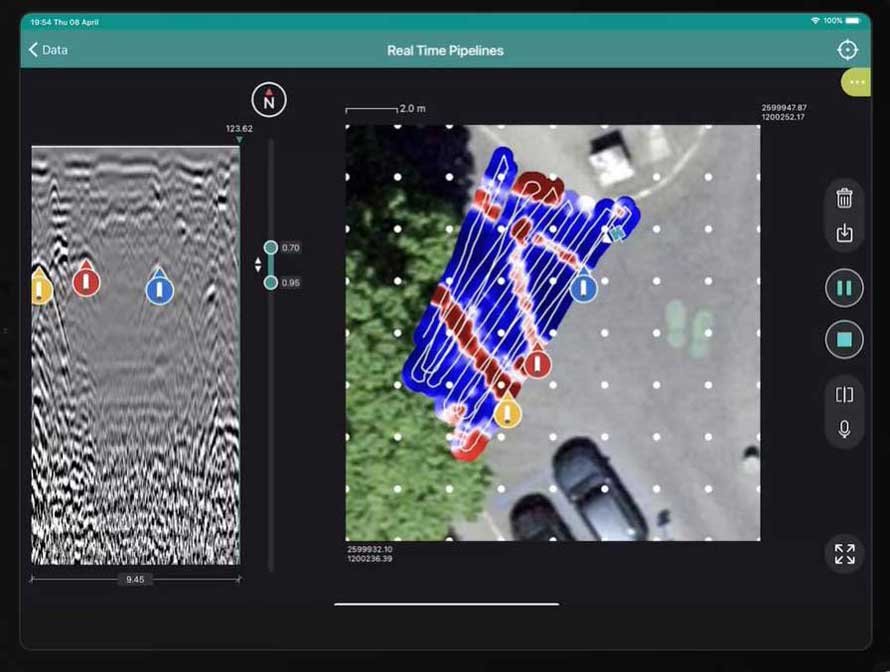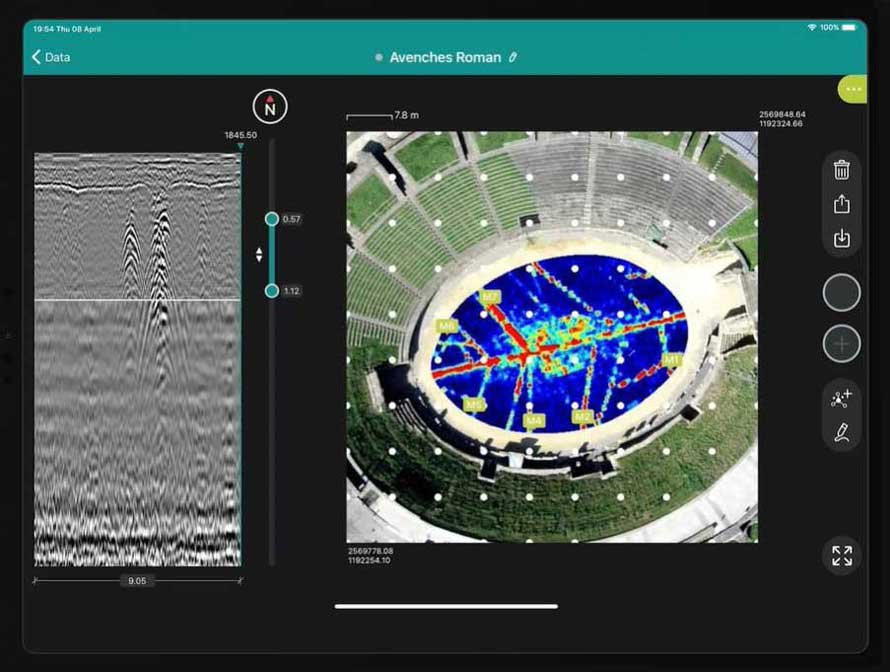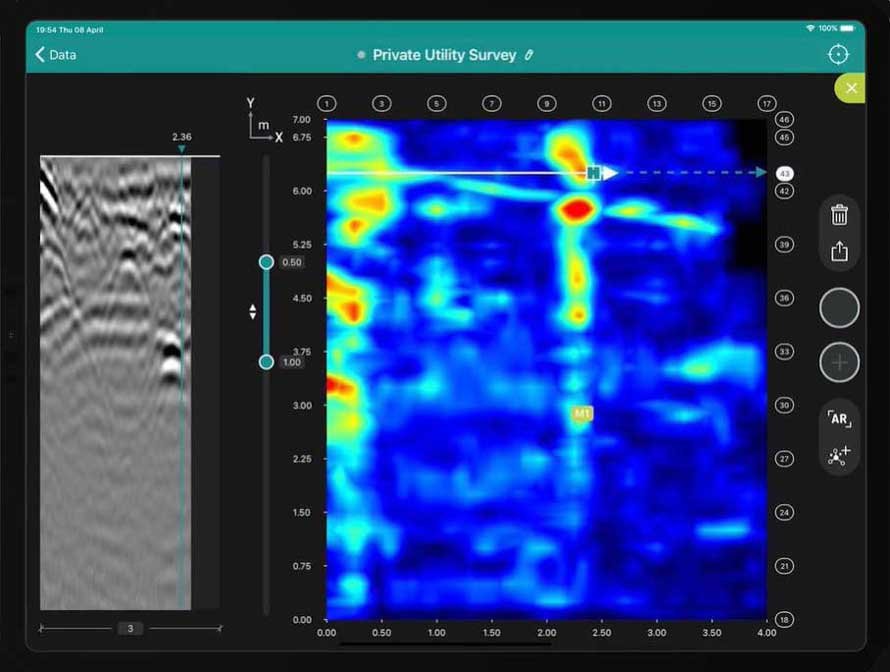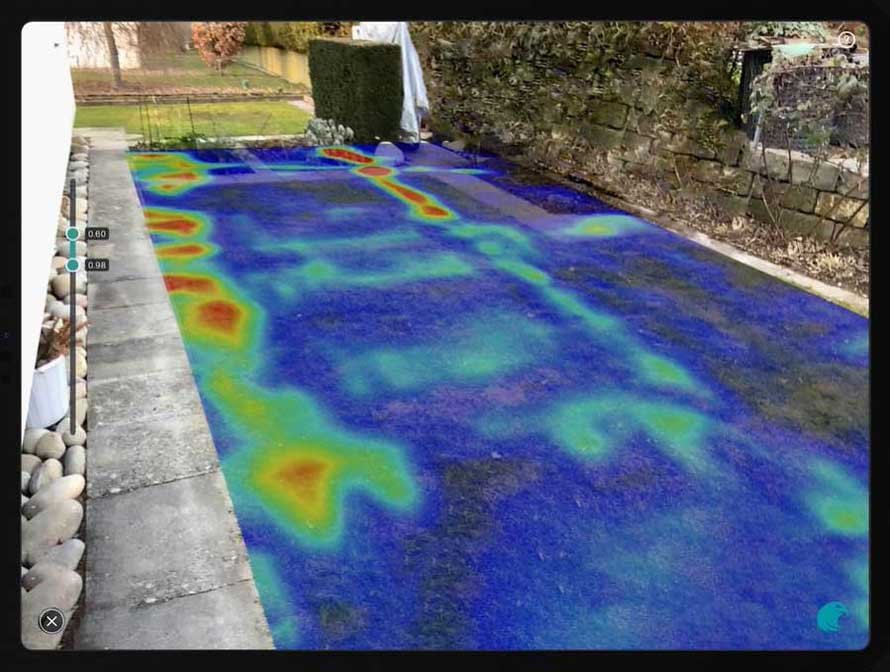Ground Penetrating Radar Technology
Locate Metallic and Non-Metallic Objects
GeoSearch Services, LLC uses both electromagnetic induction (EM) and ground penetrating radar (GPR) technology to locate and map buried underground utilities. Each method has its pros and cons and are meant to compliment one another. A thorough job of buried underground utility locating cannot be completed without the use of both technologies.
The benefit of GPR technology is that it can locate metallic and non-metallic objects such as PVC, fiberglass, concrete and any other non-metallic material. The capability of GPR to “see” any type of object buried underground is essential in performing accurate utility locating and mapping. The most common method of locating buried tanks, drums and other buried lines is “pot-holing” or excavation, which is time consuming, costly and potentially dangerous. GPR technology is completely non-invasive and safe.
However, like EM technology, GPR also has limitations. Subsurface soil materials composed of high amounts of clay and/or saturated soil materials greatly limit the effectiveness of GPR. Other limitations include very small utilities, very round surface conditions or obstructed areas.
The limitations of both technologies need to be considered for each site and the best option or a combination of techniques can be used to locate the buried utilities We can work with you to help you determine how to complete your job safely, timely and cost effectively!
About Our State-of-the-Art Equipment
We use the Proseq Subsurface Mapping GPR GS8000
This state-of-the-art equipment allows us to digitize the subsurface and get clear images in both 2D and 3D to create high-accuracy geolocation for your project.
Superior clarity of data at different depths thanks to the unique Swiss Made ultra-wideband radar technology, with high-accuracy geolocation in local coordinates.






